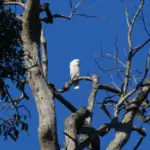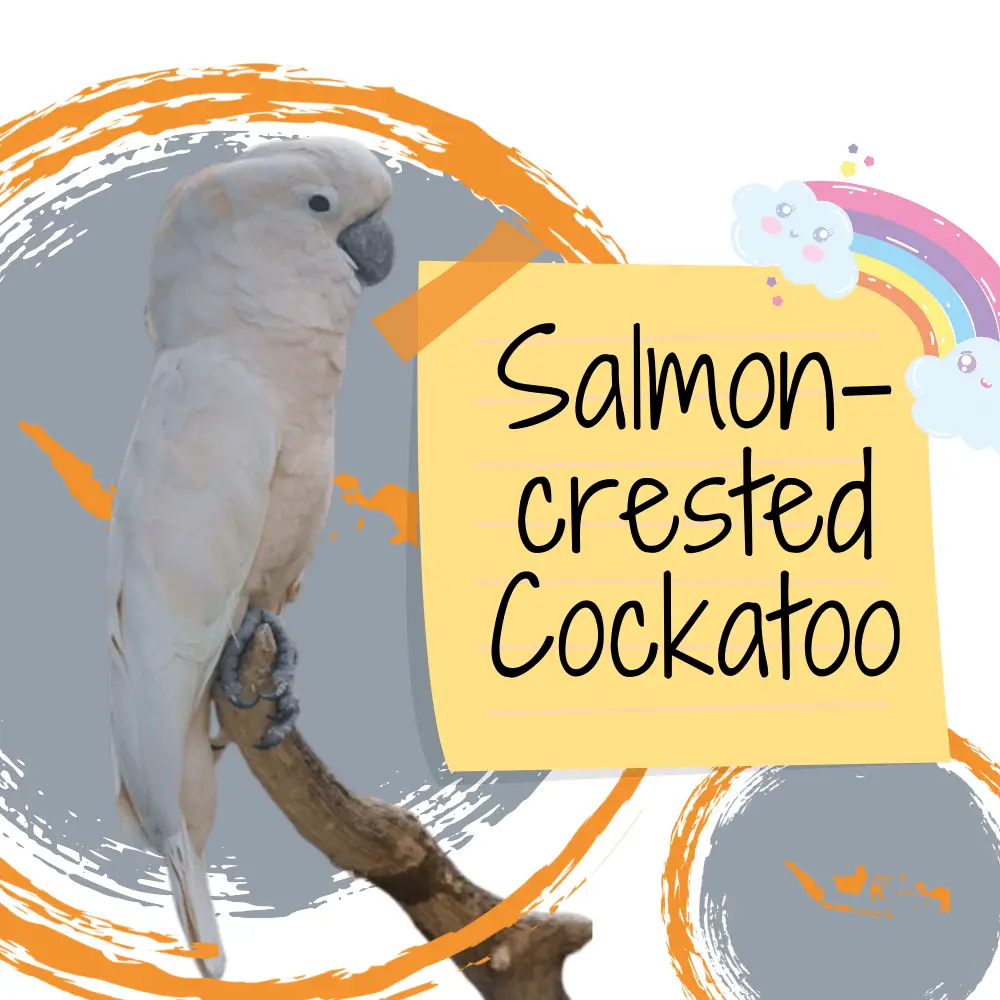
Salmon-crested Cockatoo (Cacatua moluccensis): 40–50 cm 850 g; female slightly larger. No confusion species in wild.
Overall coloration white or tinged salmon pink, with 15 cm long backward-curving erectile salmon-pink crest feathers; underside of wings and tail yellow-orange; bill grey-black;
periophthalmic skin bluish-white; legs and feet grey; eye black in male, dark brown in female. Juvenile is similar to an adult male, but very young birds have a dark grey iris.
Cacatua moluccensis Scientific name definitions
- VU Vulnerable
- Names (17)
- Monotypic
Systematics History
Closely related to C. alba. Monotypic.
Subspecies
Monotypic.
Distribution
Salmon-crested Cockatoo( Moluccas): Seram, and (perhaps introduced) Ambon; probably extinct on Haruku and Saparua.
Habitat
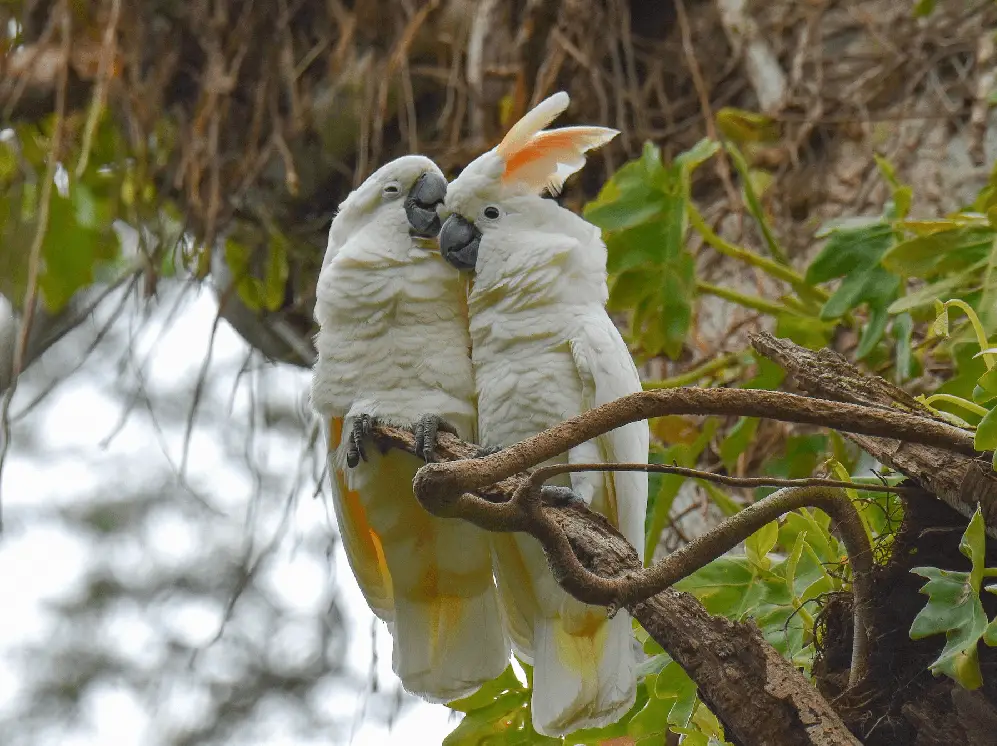
Salmon-crested Cockatoo
Lowland rainforest below altitudes of 1200 m, though considered particularly rare above 900 m. Most frequently encountered in primary forest, either disturbed or undisturbed, with large trees,
although is also found in riverine forests and relatively low-stature open-canopy forest, but is less often seen in selectively logged forests, second growth, and at edges of cultivation, and is rare in non-forested areas.
Movement
Salmon-crested Cockatoo: Usually occurs in small numbers, singly or in pairs, though up to 16 may roost together at regular sites in the non-breeding season. However, even by the late 1980s, flocks greater than four were seemingly rare in parts of Seram.
Diet and Foraging
Known to feed on seeds, nuts, fruits, and berries; attacks green coconuts (Cocos nucifera), chewing through outer layer to reach kernel. Also takes insects and their larvae.
Sounds and Vocal Behavior
Gives very loud and somewhat eerie, quavering, wailing “eearrsh” audible over up to 1 km, as well as shrill screeching notes, both most frequently given from high perches in the evening or in flight to and from roosts. Some calls are similar to those of sympatric Purple-naped Lory (Lorius domicella).
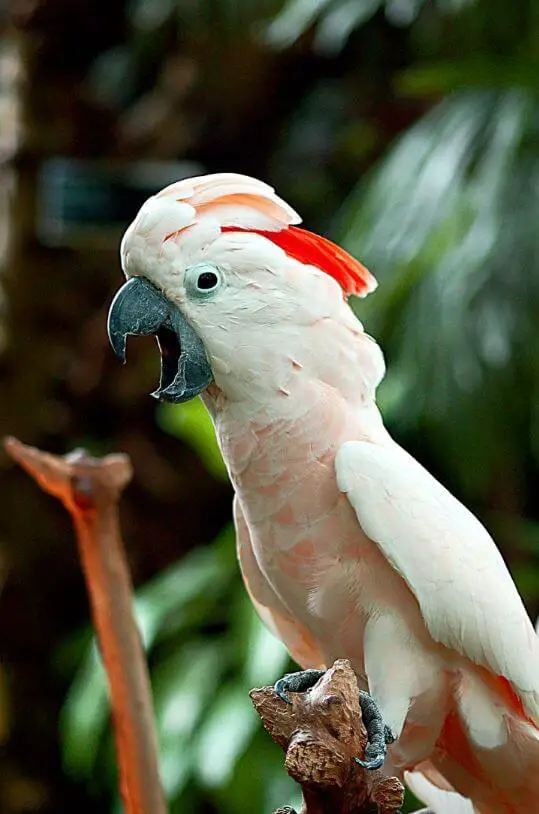
Salmon-crested Cockatoo
Breeding
Few data from wild; possible breeding activity noted in May but generally commences breeding in Jul/Aug. Nests high above the ground in tree-hollow, which is lined with wood chips.
In captivity: usually, two white eggs (1–3); incubation 28–29 days, by both sexes; chick has sparse yellow down; young stay in nest c. 14 weeks (fledging around Oct in wild). Young takes 4–5 years to reach sexual maturity.
Talking Salmon-Crested Cockatoo
SOURCE: difcymru
Conservation Status
VULNERABLE. CITES I. Population estimated at c. 8000 individuals in mid-1990s, but more recently placed at 6700–67,000 mature individuals (available data very inconsistent concerning current densities).
Formerly (until as recently as 1970)a common species of lowlands within range, but, as elsewhere in Indonesia, trapping of cockatoos for export to the aviary trade, together with the extensive clearing of forest for commercial timber, settlements, and hydroelectric schemes, has resulted in a drastic decline
(just 14% of extant forest within the species’ range is protected and > 50% is under logging concession) ; survey work in 1989 showed species to be much commoner in primary forest (c. 9–10 birds/km²) than in recently logged forest (c. 2 birds/km²), but in 1998 densities across island varied from 0·93 to 17·25 birds/km² and averaged 7·9 birds/km² across sites.
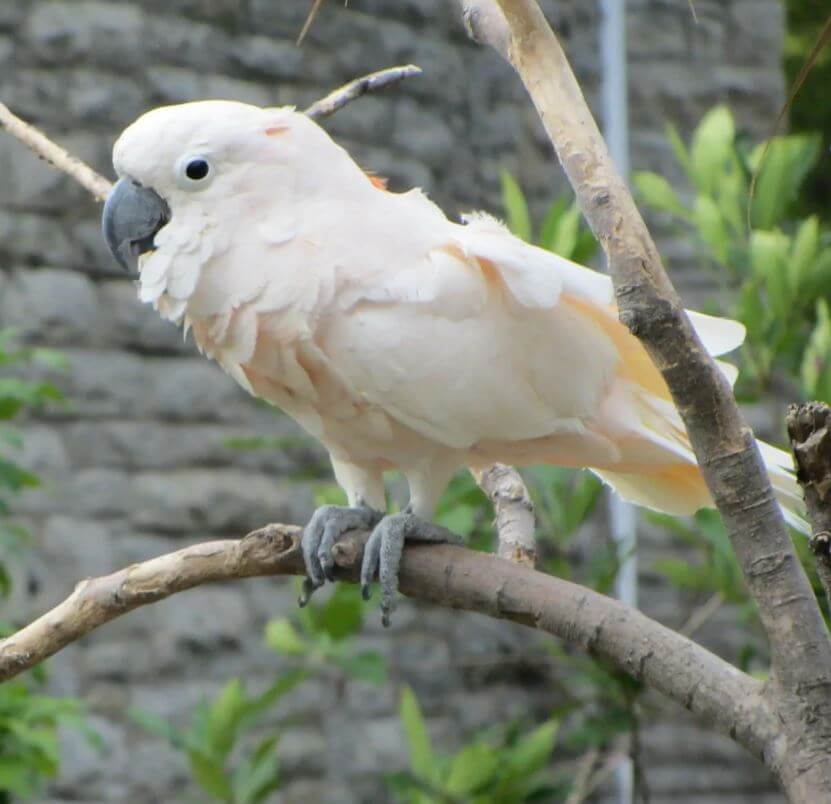
Salmon-crested Cockatoo
In 1982, Manusela National Park was established, occupying 186,000 ha, 10% of the island of Seram; by 1985, present species had become extinct in most of its previous distribution, with a stronghold in the rainforest of that park still being exploited by trappers in late 1980s, although recent fieldwork suggests that it is still locally common there and in E Seram, e.g.
within the proposed Way Bula Nature Reserve (561 km² of lowland forest) and in Gunung Sahuai Nature Reserve (119 km²). Known from a total of 19 localities on Seram and its small satellite islands, but maybe now extinct at several of these
Totals of eight individuals and 6–8 Cockatoos were seen on Ambon (where most forest already lost) during visits in 1989 and 1995 (twice), respectively; there too, the species was still common in the early 1970s.
In 1982, a total of 6413 birds were exported, making up 15% of all local bird exports, and an average of 5000 individuals exported from Indonesia per annum between 1981 and 1985 (a figure that takes no account of internal trade);
in late 1989, species were placed on CITES Appendix I, although this did not immediately halt international trade and it has been suggested that domestic trade still accounts for c. 4000 wild birds per year.
Breeds readily in captivity; this tendency might usefully be exploited as a potential means of reducing the pressure of bird-trappers on wild populations; breeding program in Europe.
Momo Mimics – Salmon Crested Cockatoo at the Houston Zoo
SOURCE: Houston Zoo


